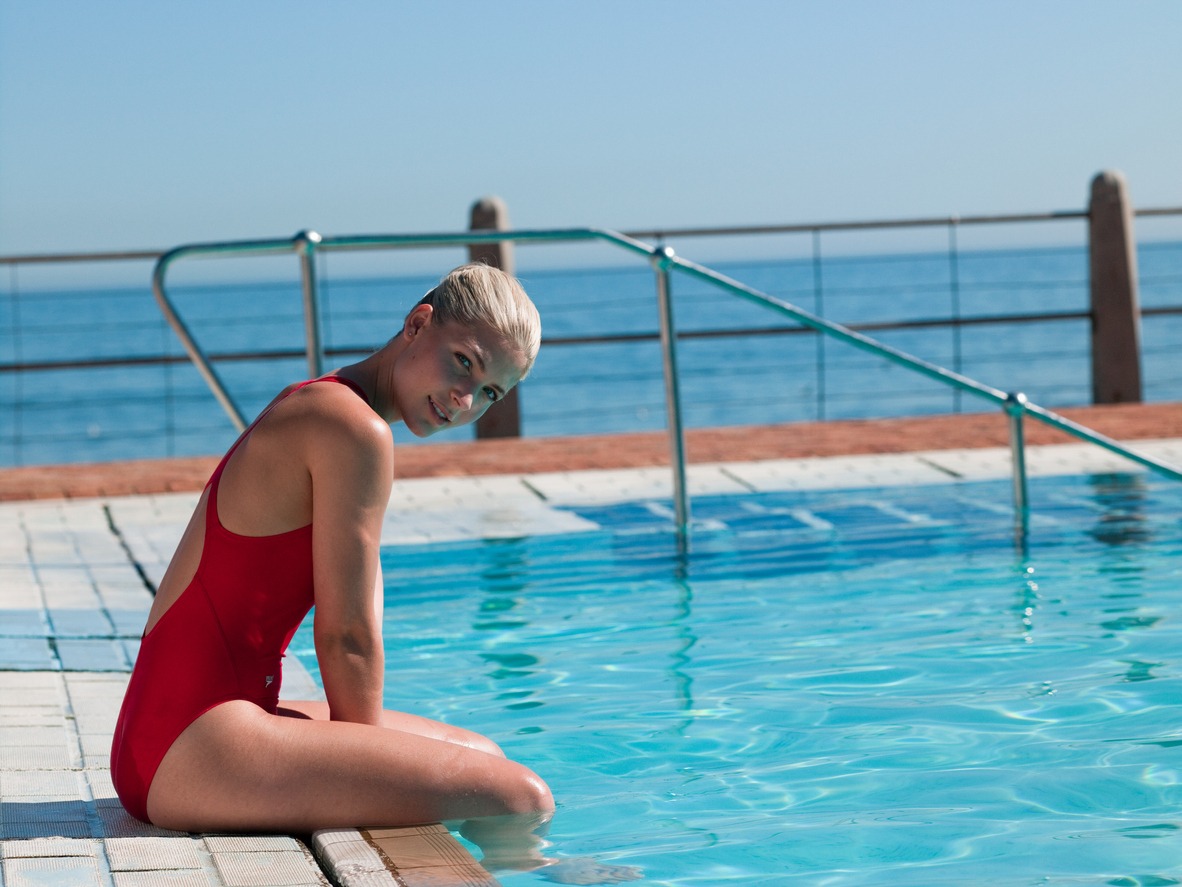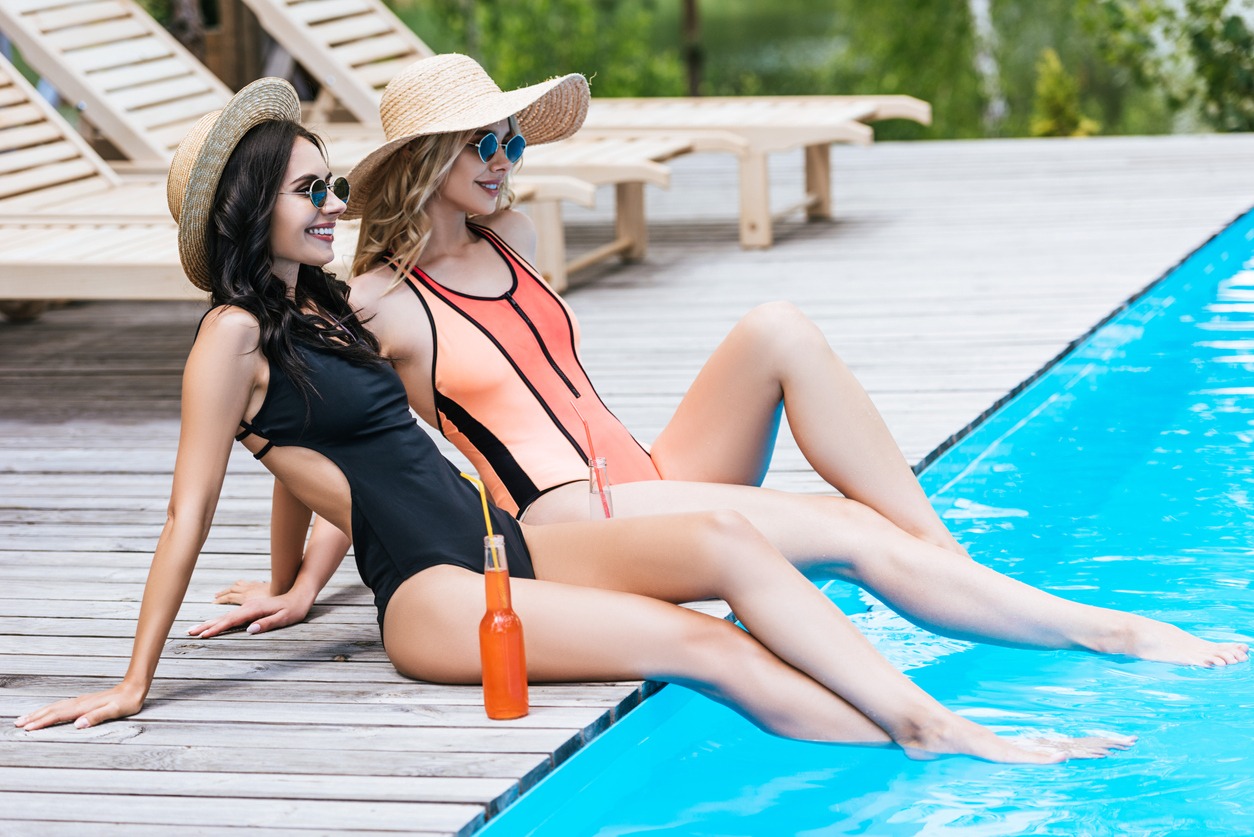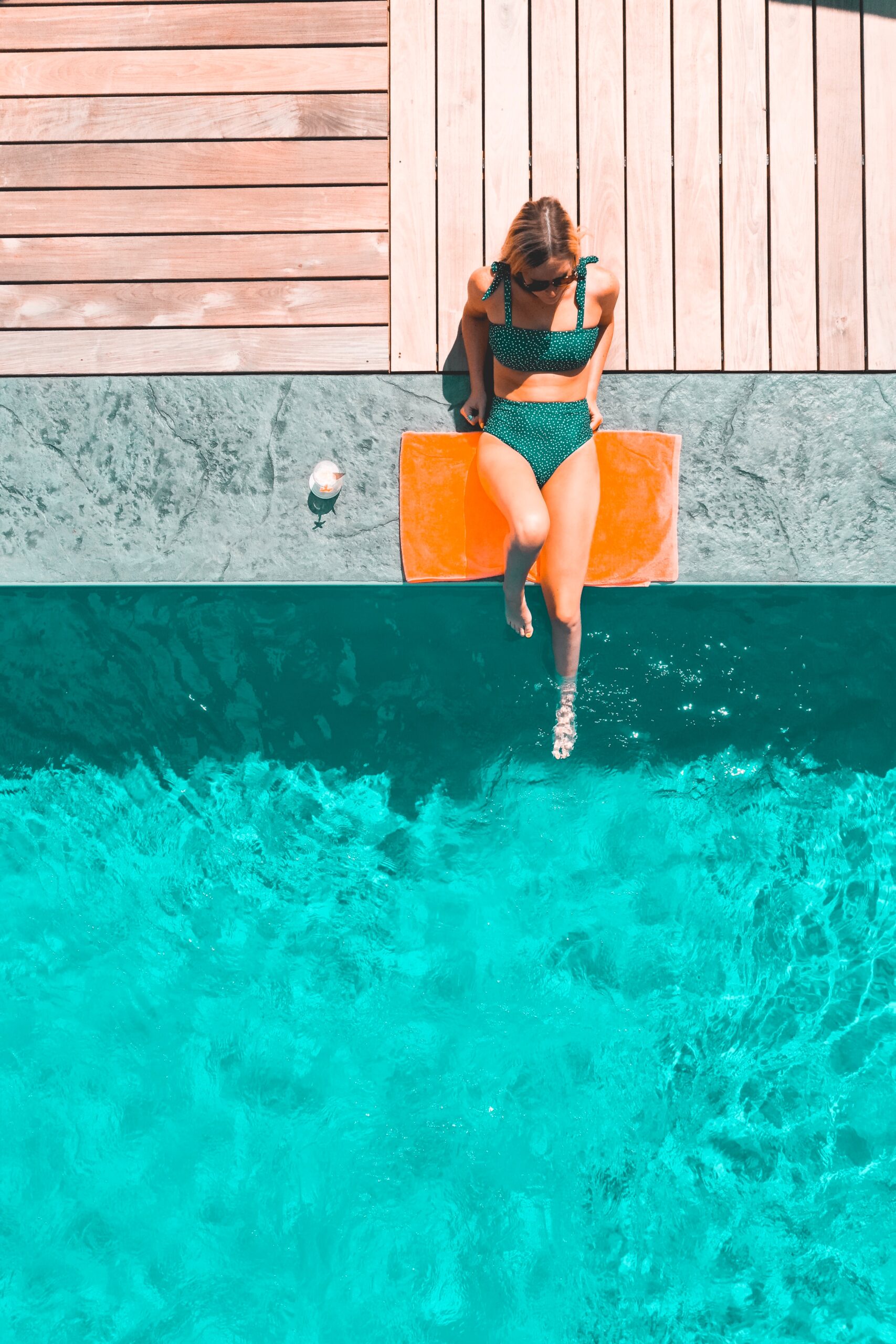Everyone enjoys discovering the ideal swimwear, which is the right color or pattern and holds up well after hours of swimming. When selecting a swimsuit, the variety of options can be overwhelming! There are numerous types of materials, mixtures, and cuts, not to mention hues and colors. What form of swimwear should I wear? Does the composition of a garment matter? What is the distinction between the various varieties of swimsuit materials? Let’s read on!
Choose the appropriate swimsuit material
From spandex to polyester to polyester and spandex composites and nylon, a variety of materials are used to create swimwear. Polyester and Spandex are two common materials for swimwear, and each has its own advantages. Choosing the appropriate swimsuit material for you and your requirements will affect the suit’s durability, comfort, and cost.
In recent years, polyester has become a popular material for swimwear, especially in competitive swimming. Polyester swimwear is renowned for its durability and longevity. They retain their color and shape after repeated use in water and are resistant to chlorine. The material also provides UV protection. Notably, polyester suits have less stretch than spandex suits, which can result in a slightly less comfortable fit, and run a bit smaller than spandex suits. Polyester suits can be more expensive initially, but their durability under all conditions makes them a good option for long-lasting wear, especially if you participate in competitive swimming or water sports. While polyester swimsuits are still a decent option for casual swimmers, you may also be interested in spandex swimwear.
Another popular costume material is Spandex, which can also be marketed under the name Lycra. Spandex is a stretchable material that provides an excellent, comfortable fit. Spandex is renowned for its elasticity and stretchability, qualities that make it ideal for swimming. Competitive swimmers have also used spandex suits, but one disadvantage is that spandex suits are not as chlorine resistant. Spandex suits must be rinsed with lukewarm water after each use, and the harsh chemicals of the pool can cause discoloration if they are not cleaned properly. However, spandex suits are less expensive than polyester suits, so if you’re a casual swimmer with a moderate budget searching for a quality swimsuit, spandex may be the material for you!
There are numerous factors to consider when selecting the ideal swimsuit fabric for you. Both spandex and polyester swimsuits have advantages and disadvantages, but as a swimmer, you must consider what is most essential to you. Are you a casual swimmer with a limited budget, or do you spend more time in the pool and require a material that can withstand the additional exposure?
Chlorine resistant fabrics
Those containing Lycra are excellently resistant to chlorine. Lycra is always blended with another fabric, typically nylon or polyester, to provide it with the optimal stretch, fit, and durability for use in swimwear. A traditional Lycra swimsuit typically lasts less than six months, which is not ideal if you swim frequently. Overexposure to chlorine will cause the swimsuit to discolor and become baggy as the chlorine degrades the fibres. The solution is to purchase a costume with Lycra Xtra Life. Lycra Xtra Life provides the same qualities as standard Lycra, such as a soft, luxurious feel and an outstanding fit, but also gives your swimsuit extended wear, resistance to fading, and eliminates the’saggy bottom’!
Lycra Xtra Life is five to ten times more resistant to pool chemicals and chlorine than standard Lycra. This makes it a fantastic option for chlorine-resistant swimwear. And the greatest of all news? All Maru swimwear that contains Lycra also contains Lycra Xtra Life, providing the ideal combination of comfort and durability.
Look for chlorine-resistant, nearly indestructible swimwear that is made of 100 percent polyester and contains PBT.
PBT swimwear fabrics are the most durable and long-lasting by a wide margin. Although not as soft as Lycra-based fabrics, Polyester/PBT composites are unquestionably the best option for purchasing swimwear that is exceptionally durable.
It is essential to note that Polyester/PBT blend fabrics lack Lycra and are therefore less stretchy than their counterparts containing Lycra. This means you’ll have to choose your size with a bit more attention. Please consult our size charts and feel free to contact us if you have any questions regarding sizing.
Make a swimsuit resistant to chlorine
Obviously, not every garment is deteriorating and changing color. So what is it that makes a garment resistant to chlorine? The key is to purchase swimwear manufactured with the proper materials to combat chlorine’s damaging effects. Some swimsuits are plainly labeled as chlorine-resistant, which is incredibly useful, but others are not. Therefore, it is essential to know which fabrics and materials to search for when purchasing a new swimsuit.
Remove chlorine from a swimsuit
How should you wash and maintain your swimsuit to guarantee its longevity? The temperature of the water used to launder your swimsuit should be the first consideration. You must ensure that it is lukewarm or chilly. Avoid using scalding water.
Water alone is insufficient to remove chlorine from a swimsuit. Instead of washing your bathing suit in a regular load of laundry with regular detergent, we recommend hand-washing it with gentle soap or even infant soap. This ensures that your one-piece swimsuit is handled with the utmost care, as opposed to being agitated with harsh detergents.
As swimsuit season approaches and you begin your search for new swimwear, be sure to consider the following advice. When you purchase a swimsuit made from the appropriate materials and take the time to wash it properly, you will find that it will last for many summers to come!
Fabric to choose for your swimsuit
The good news is that swimsuit manufacturers have mastered the art of fabric merging. Depending on the purpose of the swimsuit, they can accomplish the optimal property through blending.
Choose a swimsuit with a higher percentage of PBT or polyester if you frequently swim in a pool and durability is your primary concern. It may be blended with a small amount of nylon and/or spandex for comfort and stretchability, but polyester must always comprise the majority. At least 60-70 percent of the total fabric.
Why buy swimwear resistant to chlorine
Originally reserved for competitive swimmers, chlorine-resistant swimwear is now widely accessible in a wide variety of cuts, colors, and sizes.
A chlorine-resistant swimsuit is ideal due to its durability and low cost, even when worn only for ocean swimming and occasionally in chlorinated pools.
To assure the durability of chlorine-resistant and nylon/lycra swimsuits, the same rules apply. Inappropriate maintenance can result in a damaged swimsuit.
- Avoid coming into contact with abrasive surfaces, as snagging and pilling may occur.
- As soon as feasible, rinse your swimsuit in cool, clean water.
- Do not take a hot shower while wearing your swimsuit; excessive exposure to hot water can deteriorate the rubber in the swimsuit’s leg and arm openings.
- Never leave a swimsuit wrapped in a towel, as moisture and heat can promote the growth of bacteria.
- Immediately remove chlorine by washing your swimsuit by hand with a mild detergent. Rinse in lukewarm water
- Always dry your swimsuit in the shade, as the sun will deteriorate the elastic filaments in the arm and leg openings.
- Never machine launder, bleach, dry clean, or iron a swimsuit.
In conclusion
Chlorine-resistant fabrics have a lifespan that is 20 times that of regular swimwear fabrics. Chlorine will eventually affect the rubber and elastic around the leg, neck, and arm apertures of swimsuits. Due to the absence of elastic, rash guards will last considerably longer. Additionally, stitching will deteriorate over time.
The finest material for swimwear is a stretchy synthetic with resistance to chlorine and ultraviolet light. Knowing what to search for will allow you to confidently choose your fabric.




